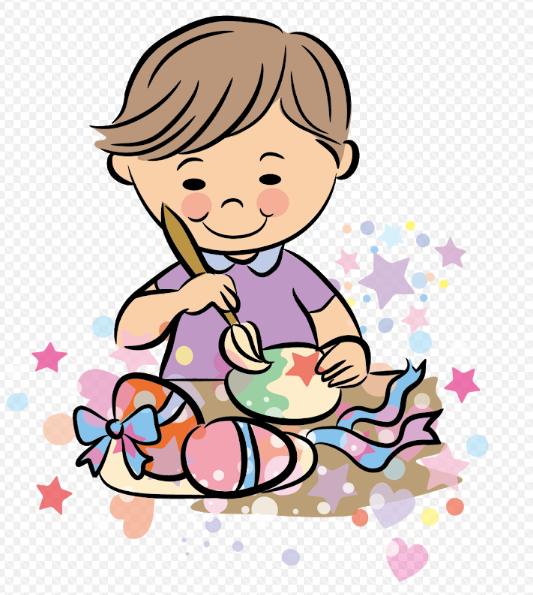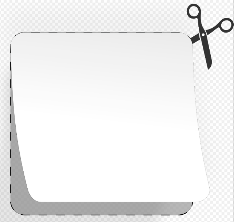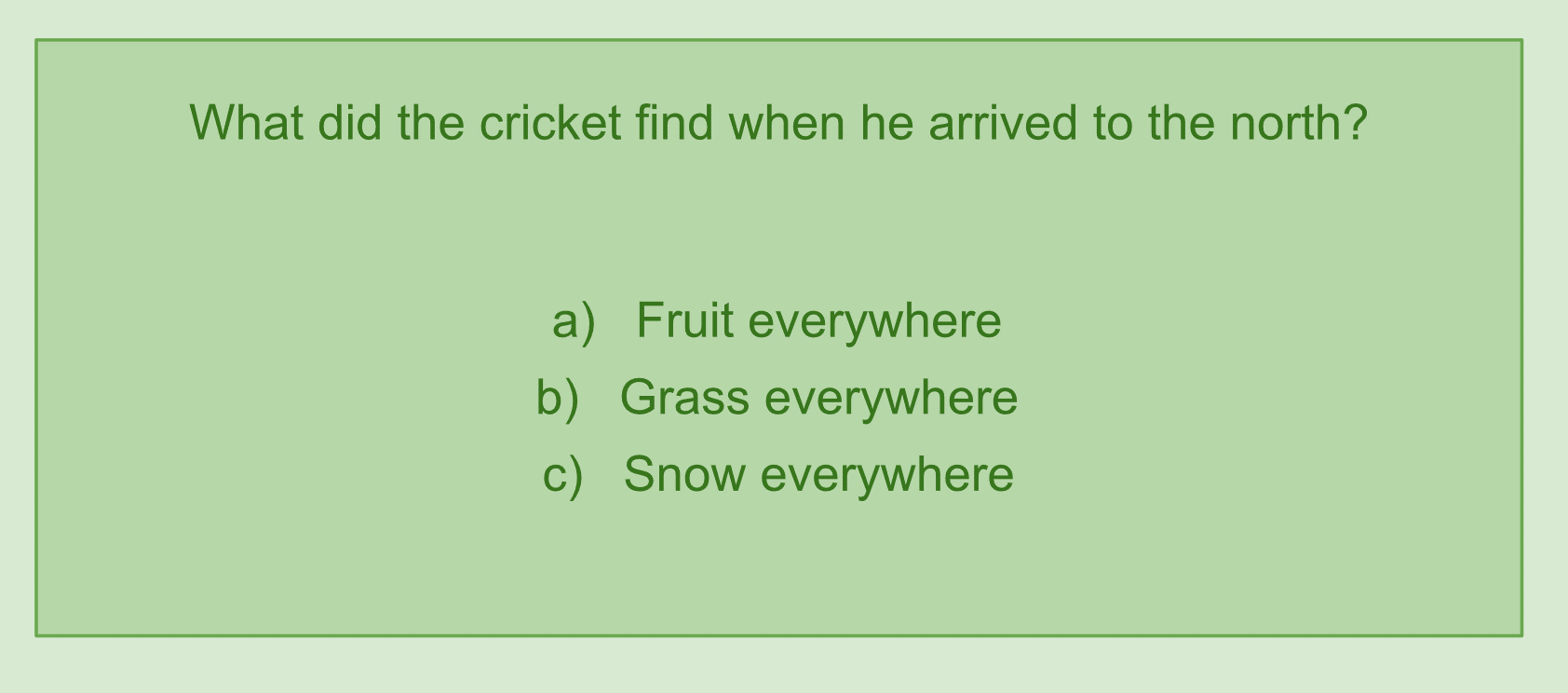Repasemos algunos temas
Valoración de la comunidad:
Última Actualización:
6 de Febrero de 2025 a las 15:33
Repasemos algunos temas
Aprendizaje esperado: explora instrucciones para elaborar un objeto (sonaja, tambor, etcétera). Participa en la escritura de un instructivo. Explora ilustraciones sobre temas de ciencias. Escucha y comprende preguntas. Participa en la escritura de preguntas para buscar y obtener información. Explora monografías ilustradas de instrumentos musicales. Participa en el diseño y la escritura de información en un gráfico sobre instrumentos musicales.
Énfasis: recuerda los conceptos relacionados con instrucciones para elaborar un objeto e instructivo, ilustraciones sobre temas de ciencias, preguntas para buscar y obtener información y monografías de instrumentos musicales.
¿Qué vamos a aprender?
Recordarás los conceptos relacionados con instrucciones para elaborar un objeto e instructivo, ilustraciones sobre temas de ciencias, preguntas para buscar y obtener información y monografías de instrumentos musicales.
¿Qué hacemos?
| Hi girls and boys, welcome to your English class. Prepare your materials to take notes: notebook, pencil and colored pencils. |
Hola niñas y niños, bienvenidos a su clase de inglés. Prepara tus materiales para tomar nota: cuaderno, lápiz y colores. |

| Today we are going to review some topics that we have worked in previous classes. To begin with our lesson, I want to start playing a game with the verbs we learned to follow instructions to make an object. I brought some words that describe actions. We learned them when we talked about following instructions to make an object. As you may see, some vowels are missing, but you have some clues in the images to put them in the correct space. |
El día de hoy repasamos algunos temas que hemos trabajado en clases anteriores. Para iniciar la clase quiero que juguemos con los verbos aprendidos que nos ayudan a seguir instrucciones para elaborar un objeto. Traje algunas palabras que describen acciones. Las aprendimos cuando hablamos de seguir instrucciones para elaborar un objeto. Como puedes ver, hay algunas vocales faltantes, pero tienes pistas en las imágenes para ponerlas en el espacio correcto. |
Ejemplo:

d___c___r___t___
o e e a
| Before we complete the words, let’s review the sound of the vowels. | Antes de completar las palabras, revisemos el sonido de las vocales. |
A
E
I
O
U
| Now, let’s look at these images and let’s try to figure out what action belongs to each of them. This will help us to fill in the blanks. What is this girl doing? She is decorating. |
Ahora, veamos estas imágenes y tratemos de averiguar qué acción corresponde a cada una. Esto nos ayudará a llenar los espacios. ¿Qué está haciendo esta niña? Está decorando. |

| Can you put the vowels in the correct order to complete the action “decorate”? | ¿Puedes poner las vocales en el orden correcto para formar la palabra “decorar”? |
Decorate/Decorar
Puedes hacer lo mismo con las siguientes:
| Fold | Doblar |  |
| Paint | Pintar |  |
| Draw | Dibujar |  |
| Glue | Pegar |  |
| Cutt off | Recortar |  |
| Great job! Let’s continue with this topic about instructions. Do you remember the ordinal numbers? How can they help us? |
Buen trabajo. Continuemos con el tema de instructivos e instrucciones. ¿Recuerdas los números ordinales? ¿Para qué nos pueden servir? |
Sirven para redactar, para la fecha o expresar en que posición quedamos en una competencia y para seguir los pasos al elaborar un objeto.
Practícalos, y repítelos varias veces.
| First | Primero |  |
| Today we will share how to make an instruction manual to learn how to make a drum at home. | El día de hoy les compartiremos como elaborar un manual de instrucciones de cómo elaborar un tambor en casa. |






| Now, our instruction manual is ready. What vocabulary did you identify in this instruction manual? Identified some verbs and also the ordinal numbers. And you? What object did you make? Are you ready to write the steps to make an object? Try and share it with your teachers. Speaking of musical instruments as the drum, Can you help me to complete these monographs or cards about musical instruments? Do you remember we made some monographs in previous lessons? Let’s review the parts of the monograph. |
Ahora, nuestro manual de instrucciones está listo. ¿Qué vocabulario identificaron en este manual de instrucciones? Identificó algunos de los verbos, y también los números ordinales. ¿Y tú? ¿Qué objeto elaboraste? ¿Están listos para escribir los pasos a seguir de cómo elaborar un objeto? Intenta escribir y compártelo con tus maestras y maestros. Hablando de instrumentos como el tambor, ¿Me pueden ayudar a completar estas monografías o tarjetas de instrumentos musicales? ¿Recuerdas que realizamos algunas monografías en las clases anteriores? Revisemos las partes de la monografía. |

| Title | Título |
| Family | Familia |
| Material | Material |
| How to play | ¿Cómo se toca? |
| Fun fact | Dato curioso |
| We are ready to complete the information on the monograph. | Ya estamos listas y listos para completar la información en la monografía. |


| Our tambourine monograph is ready. Congratulations! But not only musical instruments produce sounds. Are there some animals that produce sound? Es cierto yo me despierto con el canto de los pájaros todas las mañanas. Do you remember the fragment of the story: “Why does the cricket chirp? Today we have a surprise for you! We’ve been asked to share the end of that story and here we go. Pay attention because you are going to ask some questions about it. |
Nuestra monografía del pandero está lista. ¡Felicidades! Pero no sólo los instrumentos musicales producen sonido. ¿Hay algunos animales que cantan y emiten sonidos? It is true! I get woken up by birds singing every morning. ¿Recuerdas el fragmento que te presentamos titulado, ¿Por qué canta el grillo? ¡Hoy les tenemos una sorpresa! Nos han solicitado compartir el desenlace y pues aquí vamos. Pon atención porque te haremos unas preguntas. |
Why does the cricket chrip? (Second part)
| Next morning, the cricket was ready to go home and tell the ant about his trip. But the cricket hopped to start flying and he couldn’t. His wings had been frozen. So, the cricket had to hop all the way home. It took him days to return. When he arrived home, he found out that when he rubbed wings together, they made a chirping noise. But he couldn't fly anymore, he could only hop and rub its wings It is the sound that he makes, when we say he sings. We are going to play with this roulette: |
A la mañana siguiente, el grillo estaba listo para irse a casa y contarle su viaje a la hormiga. Pero el grillo empezó a saltar e intentó volar y no pudo. Sus alas se habían congelado. Por tanto, tuvo que regresar a casa saltando, eso le llevó días para llegar. Cuando llegó a casa descubrió que, al frotar sus alas, emiten un sonido que trinaba. Él ya no pudo volar jamás, solo pudo saltar y frotar sus alas. Ese es el sonido que emite cuando decimos que el grillo canta. Vamos a jugar con esta ruleta: |

| We will spin the roulette with this remote control and see which color it falls on. Each color belongs to a question. Let’s start. |
Vamos a girar la ruleta y ver en qué color sale. Cada color corresponde a una pregunta. Comencemos. |

| Excellent. Color blue. The question is: | Excelente. Color azul. La pregunta es: |

Al principio del cuento, ¿A dónde no voló el grillo?
- Al este. b) Al norte. c) Al oeste.
| The answer is b to the north. Excellent. Spin the roulette once more. |
La respuesta es b al Norte. Excelente. Gira la ruleta una vez más. |

| Excellent. Color green. The question is: | Excelente. Color verde. La pregunta es: |

¿Qué encontró el grillo cuando llegó al norte?
- Fruta por todos lados. b) Pasto por todos lados. c) nieve por todos lados.
| The answer is: c) snow everywhere. Excellent. One more. |
La respuesta es: c) nieve por todos lados. Excelente, una más. |

| Excellent. Color pink. The question is: | Excelente. Color rosa. La pregunta es: |
Why does the cricket chirp?
Because it is singing.
Because when it rubs its wings together, they make a chirping noise.
Because it loves to play a musical instrument.
¿Por qué el grillo chirría?
a) Porque está cantando.
b) Porque cuando roza sus alas, hacen ese sonido de chirrido.
c) Porque toca un instrumento musical de amor.
| The answer is: b) Because when it rubs its wings together, they make a chirping noise. Let’s spin the roulette for the last time! |
La respuesta es: b) Porque cuando roza sus alas, hacen ese sonido de chirrido. ¡Giremos la ruleta una última vez! |

| Excellent. Color red. The question is: | Excelente. Color rojo. La pregunta es: |

¿Cuántos animales conoció el grillo en el norte?
- Cinco b) Dos c) Cuatro.
| The answer is b) two. You paid attention and you knew all the answers? Congratulations to you! This was very fun but I’m afraid the class is over. Thank you very much for joining us! |
La respuesta es b) dos. ¿Pusiste atención y te sabías todas las respuestas? ¡Felicidades para ti! Esto fue muy divertido, pero me temo que la clase terminó. ¡Gracias por acompañarnos! |
¡Buen trabajo!
Gracias por tu esfuerzo.
*Este material es elaborado por la Secretaría de Educación Pública y actualizado por la Subsecretaría de Educación Básica, a través de la Estrategia Aprende en Casa*.


Login to join the discussion